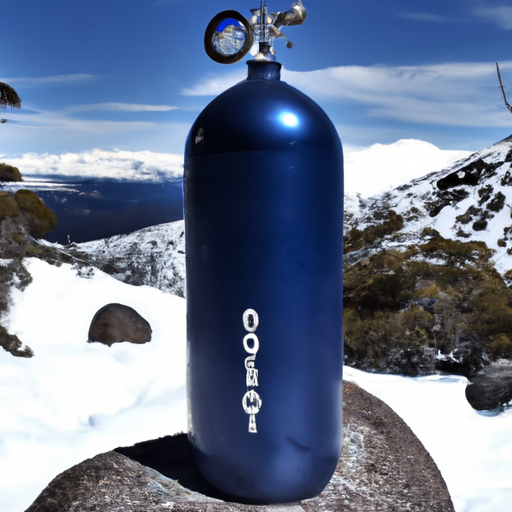Altitude sickness can be a real downer when you’re on a high-flying adventure, but fear not, my friend! In this article, we’ll explore the telltale signs and symptoms of altitude sickness, so you’ll be well-equipped to recognize them. And that’s not all – we’ll also share some handy tips on how to prevent this pesky ailment from crashing your mountain-top escapades. So, fasten your seatbelts (or rather, your reading glasses), and get ready to soar high without the altitude sickness blues!
Overview of Altitude Sickness
Altitude sickness, also known as acute mountain sickness (AMS), is a common condition that affects individuals who quickly ascend to high altitudes. It occurs due to the body’s difficulty in adapting to the reduced oxygen levels at higher elevations. Altitude sickness can have mild to severe symptoms and could potentially be life-threatening if not properly recognized and managed. In this article, we will explore the causes, signs and symptoms of altitude sickness, as well as various prevention measures to ensure your well-being when venturing into higher altitudes.
Understanding Altitude Sickness
Altitude sickness is a condition that occurs when individuals ascend to high altitudes, typically above 8,000 feet (2,400 meters) above sea level. At these heights, the air becomes thinner, making it harder for the body to get the oxygen it needs. This lack of oxygen triggers a series of physiological responses in the body, leading to altitude sickness. It is important to understand that anyone can develop altitude sickness, regardless of age, gender, or physical fitness level.
Causes of Altitude Sickness
Altitude sickness is primarily caused by the reduced oxygen availability at higher altitudes. Rapid ascent or sudden exposure to high altitudes without allowing enough time for acclimatization can significantly increase the risk of altitude sickness. The thin air at high altitudes affects the body’s ability to adequately oxygenate the blood, leading to the development of symptoms. Other factors, such as individual susceptibility and genetic factors, can also play a role in the occurrence of altitude sickness.
Signs and Symptoms of Altitude Sickness
Altitude sickness presents itself through various signs and symptoms, the severity of which can range from mild discomfort to potentially life-threatening conditions. The three main types of altitude sickness are acute mountain sickness (AMS), high altitude pulmonary edema (HAPE), and high altitude cerebral edema (HACE). Let’s explore these conditions in detail:
Acute Mountain Sickness (AMS)
AMS is the most common form of altitude sickness and usually occurs within hours or a day of ascending to high altitudes. Symptoms of AMS can include headaches, dizziness, nausea, vomiting, fatigue, loss of appetite, and insomnia. These symptoms are often similar to those caused by the flu or a hangover, so it’s important to pay attention to any physical changes while at high altitude.
High Altitude Pulmonary Edema (HAPE)
HAPE is a more severe form of altitude sickness that affects the lungs. Symptoms may include shortness of breath, coughing (often with pink or bloody sputum), extreme fatigue, rapid breathing, and chest tightness. HAPE requires immediate medical attention, as it can rapidly progress and become life-threatening if left untreated.
High Altitude Cerebral Edema (HACE)
HACE is the most dangerous form of altitude sickness, affecting the brain. Symptoms of HACE may include confusion, clumsiness, difficulty walking, nausea, severe headache, hallucinations, and loss of consciousness. Like HAPE, HACE is a medical emergency, and immediate medical assistance is crucial.
Prevention of Altitude Sickness
While altitude sickness can be debilitating, being aware of prevention measures can help minimize the risk and ensure a safer journey. Here are several key strategies to consider before and during your time at high altitudes:
Gradual Ascent
One of the most effective ways to prevent altitude sickness is to allow time for gradual acclimatization. Ascending slowly gives your body a chance to adjust to the thin air and adapt to the changing oxygen levels. It is recommended to increase your sleeping elevation by no more than 1,000 feet (300 meters) per day above 8,000 feet (2,400 meters). Take breaks and spend an extra day or two at intermediate altitudes to allow your body to acclimatize properly.
Proper Hydration
Staying hydrated is crucial in preventing altitude sickness. Drink plenty of fluids, preferably water, to combat the effects of dehydration at higher altitudes. Avoid excessive caffeine and alcohol consumption, as they can further dehydrate your body. Proper hydration helps maintain blood flow, oxygen delivery, and supports overall bodily functions.
Dietary Considerations
A healthy diet can play a significant role in preventing altitude sickness. It is recommended to consume foods rich in carbohydrates and low in fat. Carbohydrates provide the necessary energy for the body to function optimally at high altitudes. Avoid heavy meals, as they can make you feel sluggish and contribute to altitude sickness symptoms.
Medication
Certain medications, such as acetazolamide, can help prevent altitude sickness. Consult with your healthcare provider before your trip to determine if medication is suitable for you. Acetazolamide helps the body adjust to higher altitudes by increasing respiratory rate and promoting oxygenation. However, it is important to note that medication alone is not a substitute for proper acclimatization.
Avoiding Alcohol and Smoking
Alcohol and smoking can exacerbate the effects of high altitude on the body. Alcohol can impair judgment and lead to dehydration, while smoking restricts lung function and further reduces oxygen levels. It is best to avoid alcohol and smoking altogether while at high altitudes to decrease the risk of developing altitude sickness.
Use of Oxygen
In some cases, supplemental oxygen may be necessary, especially for individuals with pre-existing respiratory conditions or those experiencing severe symptoms of altitude sickness. Portable oxygen systems are available and can provide immediate relief by increasing oxygen saturation levels, helping alleviate symptoms and improve overall well-being.
Acclimatization
Allowing your body time to acclimatize is crucial in preventing altitude sickness. Consider spending the first night at an intermediate altitude before ascending to higher regions. Plan rest days during your journey to allow your body to adjust and recover. Listen to your body, and if you notice any symptoms, descend to a lower altitude to alleviate discomfort and prevent the condition from worsening.
When to Seek Medical Help
Recognizing the severity of symptoms is essential in determining when to seek medical help. Mild altitude sickness symptoms, such as mild headaches and fatigue, can often be alleviated by rest, hydration, and proper acclimatization. However, if symptoms persist or worsen, it is crucial to seek medical assistance. Additionally, severe symptoms such as those associated with HACE or HAPE require immediate medical attention.
Mild Symptoms vs. Severe Symptoms
Mild symptoms of altitude sickness typically include mild headaches, nausea, and fatigue, which may resolve with rest and proper acclimatization. Severe symptoms, on the other hand, should never be overlooked. These can include extreme shortness of breath, persistent coughing with frothy or bloody sputum, confusion, and loss of consciousness. Prompt medical intervention is necessary to prevent further complications associated with severe altitude sickness.
Emergency Situations
In emergency situations where advanced medical help is not immediately accessible, descending to a lower altitude is of utmost importance. However, this should be done gradually to avoid exacerbating symptoms. If necessary, assistive devices such as portable oxygen can provide temporary relief until emergency services are available.
Conclusion
Recognizing and preventing altitude sickness is crucial to ensure a safe and enjoyable journey at high altitudes. Understanding the causes, signs, and symptoms of altitude sickness allows for early intervention and appropriate prevention methods. By gradually ascending, staying properly hydrated, maintaining a healthy diet, and practicing proper acclimatization techniques, you can significantly reduce the risk of altitude sickness. Remember to consult with healthcare professionals for personalized advice, especially if you have pre-existing health conditions. With proper preparation and care, you can explore high altitudes with confidence, experiencing the beauty and wonder our world has to offer.
Hi there! I’m the Editor, experienced outdoor development specialist, mountaineer and the mind behind ‘Country Rambler.’ I’m thrilled to welcome you to our website, your go-to destination for all things hill walking and rambling. Whether you’re an experienced adventurer or just dipping your toes into the great outdoors, I’ve got you covered. From providing guidance on essential gear, like boots and jackets, to sharing trail tips that range from peaceful paths to challenging peaks, I’ve got everything you need to embark on your next adventure. Stay in the loop with our fresh news updates and trail information. So, lace up those boots and join me as we explore the breathtaking landscapes together. Happy wandering!


